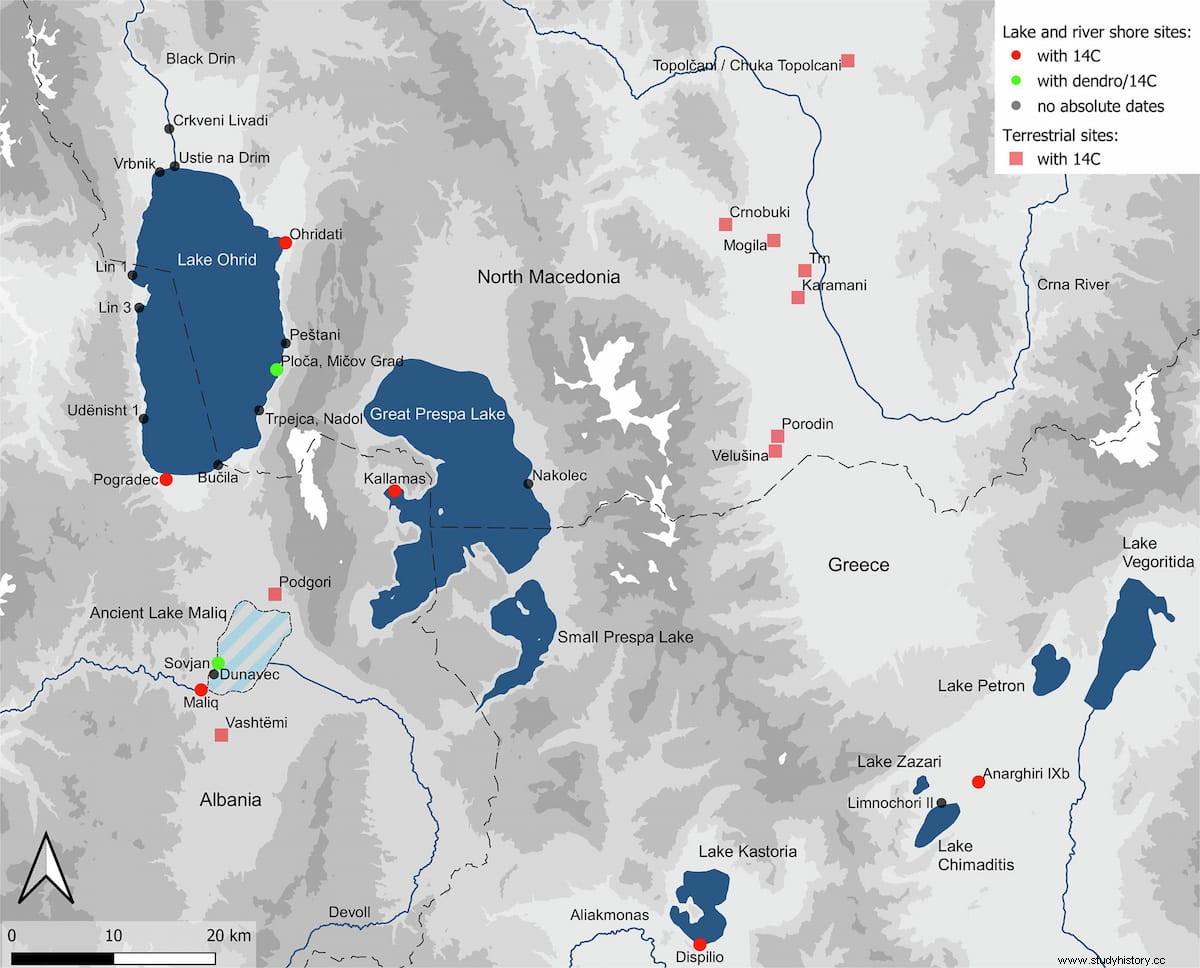A research team from the University of Bern has for the first time accurately dated the pile dwellings on the shores of Lake Ohrid in the southwestern Balkans:they emerged in the middle of the 5th millennium BC. The region surrounding the oldest lake in Europe played a key role in the proliferation of agriculture.
The remains of the underwater sites are lucky for prehistoric archaeology. The wooden piles with which its foundations were built have been excellently preserved:in the absence of oxygen, they were not corroded by bacteria or fungi. Wood preserved in this way is excellently suited for dendrochronological examinations, which can be dated by growth rings. In combination with radiocarbon dating, the age of the wood and thus the time when the settlements were built can be determined. This method has been applied for the first time outside the Alpine region.

Under the direction of the University of Bern, some 800 piles have been dated within the framework of the large international EXPLO project. They come from a deposit on the eastern shore of Lake Ohrid. The results have been presented in the Journal of Archaeological Science .
The new findings show that the Ploča Mičov Grad bay settlement near the Macedonian city of Ohrid was built in different phases. And over thousands of years:From the Neolithic (mid-5th millennium BC) to the Bronze Age (2nd millennium BC). Until now, it was assumed to be a settlement from the period around 1000 BC. This intense construction activity explains the extraordinary density of wooden piles in the site. The settlements were practically built on top of each other.

The precise dates of the different settlement phases of Ploča Mičov Grad represent important temporal reference points for a chronology of prehistory in the southwestern Balkans , says Albert Hafner, Professor of Prehistoric Archeology at the University of Bern and member of the Oeschger Center for Climate Change Research. The precise chronological classification, in turn, opened up unimaginable possibilities of interpretation of the traces found from the early occupation of Lake Ohrid.
Under the current lake bed hides a so-called cultural layer. It is made up mainly of organic material and is up to 1.7 meters thick. Among other things, it contains remains of harvested grain, wild plants and animals, which can provide conclusions about the development of agriculture.
In the Balkans, newly arrived farmers faced comparatively cool and wet weather conditions, forcing them to adapt farming practices accordingly.The interactions between this groundbreaking innovation and the environment are largely unknown Hafner stressed. This is precisely the research gap that the EXPLO project aims to fill.
The mounds in the Alpine region and the archaeological site in the Balkans are the only remains of Neolithic settlements with excellent organic preservation. The early finds are particularly interesting as the area played a key role in the proliferation of agriculture:Europe's first farmers lived here.
The first herders and farmers from Anatolia came first to the Aegean region, especially northern Greece, and then to Central Europe via southern Italy and the Balkans more than 8,000 years ago.

Our research sheds light on the great potential of future research on prehistoric settlements in the region says Hafner. The importance of the settlements of Lake Ohrid is enormous:The mounds around the Alps have been a UNESCO World Heritage Site since 2011, and the settlements of the wetlands of the southwestern Balkans are no less significant .
The region offers a situation comparable to that of the Alpine area:Traces of prehistoric settlements have been preserved in numerous lakes in present-day Albania, northern Greece and northern Macedonia. However, with few exceptions, the deposits in the Balkan region have hardly been studied until now.
The Bern researchers are also pursuing other long-term goals. We want to contribute to local recognition of the value of these wetland settlements and better protection of these cultural assets Hafner explains. The sites are not only located on the northern Macedonian shore of Lake Ohrid, where the EXPLO team conducted fieldwork campaigns in 2018 and 2019, but also on the western Albanian shore of the lake, where the researchers were active in the summer of 2021. .
